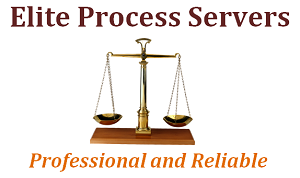- Contact us
- +91-9999823664
- [email protected]
IFRS vs US GAAP: R&D costs
Ошибки начинающих трейдеров: типичные на Форекс и в бинарных опционах
October 26, 2023IFRS vs US GAAP: R&D costs
December 7, 2023IFRS vs US GAAP: R&D costs
.jpg)
However, amortization of these costs will eventually increase expenses, impacting net income. Research and development (R&D) expenses are a significant investment for businesses, driving innovation and competitive advantage. Understanding how to capitalize these costs rather than expensing them immediately can influence a company’s financial health and strategic planning. Under US GAAP, R&D costs within the scope of ASC 7301 are expensed as incurred.
.jpg)
Examples of Research Costs
Some companies use R&D to update existing products or conduct quality checks in which a business evaluates a product to ensure that it is still adequate and discusses any improvements. If the improvements are cost-effective, they will be implemented during the development phase. Research and development is a systematic activity that combines basic and applied research to discover solutions to new or existing problems or to create or update goods and services. When comparing US GAAP and IFRS in terms of research and development costs, it’s important to understand the implications on assets and liabilities reporting. Reporting practices affect the balance sheet, particularly concerning aspects such as fixed assets and depreciation, alongside liabilities and liquidity analysis. When assessing a company’s financial health, analysts often turn to non-GAAP measures to adjust for items they believe either enhance or detract from the understanding of a company’s true economic performance.
- It also requires companies to disclose the total research and development costs for the year in financial statements.
- IFRS permits the capitalization of development costs when specific criteria are met, suggesting that an intangible asset will be generated that brings future economic benefits.
- Liquid accounts are easily turned into funds for paying bills and covering financial emergencies or pressing demands.
- That figure represents over a quarter of the sales it generated in the period.
- If your business buys another company, you must capitalize any “in process” R&D projects that come with the purchase.
- A lower ratio may signal a stronger financial position, potentially leading to favorable borrowing terms.
Key Accounting Standards
FASB defines research as a planned search or investigation to discover new knowledge; it defines development as the translation of research findings into a plan or design. Research and development especially affects investors in technology or pharmaceutical companies. Therefore, investors need to pay attention to research and development news, because the discovery and development of better technology begins with having a successful R&D department. These are costs incurred to develop new products or processes that may or may not result in commercially viable items. The general rule is that research and development costs are to be expensed immediately when the costs are incurred.
R&D Expense Accounting
- Companies need to prepare for significant changes in their balance sheets in 2022 and beyond.
- The first model of R&D is generally staffed by engineers while the second model may be staffed with industrial scientists.
- This content is for general information purposes only, and should not be used as a substitute for consultation with professional advisors.
- These capitalized costs also influence equity by increasing the book value of assets, which affects the debt-to-equity ratio, a key measure of financial leverage.
- The amounts spent on projects with a more than 50% chance of becoming saleable are capitalized as assets.
For example, BlackRock Inc. is the largest investment manager in the U.S. and in the world, judging by its $6.5 trillion in AUM (as of March 31, 2019). Company A, a commercial laboratory, is manufacturing a stock of 20,000 doses (trial batches) of a newly-developed drug using various raw materials. The doses can only be used in patient trials during Phase III clinical testing, and cannot be used for any other purpose. Company A should expense the donation (generally as selling, general and administrative expense) when incurred (normally when paid) or at the time an unconditional promise to give cash is made, whichever is sooner. Company A will pay Company B $3 million only upon completion of the contracted work.
Amortization of Capitalized Development Costs
.jpg)
Nonrefundable advance payments for future clinical trial management services should initially be capitalized and then expensed as the related services are performed. Company A should continue to evaluate whether it expects the services to be rendered. If services are not expected to be rendered, the capitalized advance payment should be charged to expense in the period in which this determination is made. Company A should expense the $3 million when incurred (normally when paid) as research and development costs since the technology has no alternative future uses.
How Does GAAP Require Research & Development Costs to Be Recorded?
Send us a message research and development gaap to schedule a consultation to ensure your R&D is sitting on a solid foundation. Tech companies rely heavily on their research and development capabilities, so they have relatively outsized R&D expenses. In a constantly changing environment, it’s important for such a company to remain on the bleeding edge of innovation. For example, Meta (META), formerly Facebook, invests heavily in the research and development of products such as virtual reality and predictive AI chatbots. Businesses conduct R&D for many reasons, the first and foremost being new product research and development.
If you don’t capitalize your R&D, the total assets and total invested capital may not produce an accurate reflection of your research and development expense for that year. Under Generally Accepted Accounting Principles (GAAP), companies must expense their R&D activities within the same year the cost was incurred. The risk of doing so means that companies can experience tremendous volatility when reporting their profits. R&D expenses can range from relatively minor costs to several billions of dollars. Companies in the industrial, technological, healthcare, and pharmaceutical sectors usually have the highest levels of R&D expenses.
